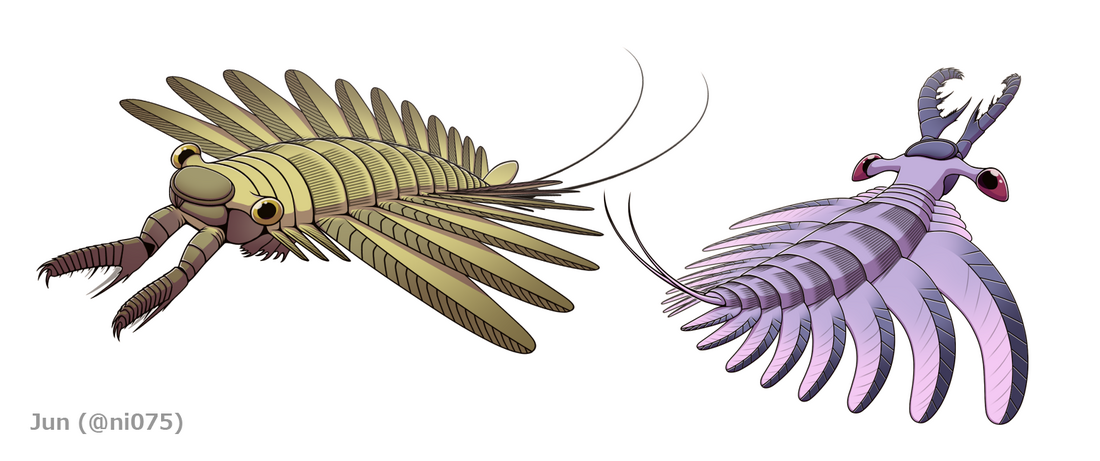Amplectobeluidae is a clade of Cambrian radiodonts. It currently includes five definitive genera, Amplectobelua, Lyrarapax, Ramskoeldia, Guanshancaris and a currently unnamed genus from the lower Cambrian aged Sirius Passet site in Greenland.[1] There is also a potential fifth genus, Houcaris, but that genus has become problematic in terms of its taxonomic placement.[2][3]
| Amplectobeluidae | |
|---|---|
 | |
| Amplectobelua (left) and Lyrarapax (right) | |
| Scientific classification | |
| Domain: | Eukaryota |
| Kingdom: | Animalia |
| Phylum: | Arthropoda |
| Order: | †Radiodonta |
| Clade: | †Amplectobeluidae Pates et al., 2019 |
| Genera | |
Definition
In 2014, Amplectobeluidae was defined as the most inclusive clade including Amplectobelua symbrachiata but not Anomalocaris canadensis, Tamisiocaris borealis, or Hurdia victoria.[4]
Description
Amplectobeluids could be recognized by frontal appendages with well-developed first distal endite, which forming a pincer-like structure that presumably better suited for a grasping function.[4][5] Complete body fossils of amplectobeluids are only known by Amplectobelua and Lyrarapax, both showing combination of characters resembling Anomalocaris (i.e. streamlined body; small head with ovoid sclerites; well-developed swimming flaps; a pair of caudal furcae).[6][7][8][9][10] Another distinctive features only known in amplectobeluid genera were pairs of gnathobase-like structures (known by Amplectobelua and Ramskoeldia),[9][11] or an oral cone with combination of tetraradial arrangement and scale-like nodes (known by Lyrarapax and Guanshancaris).[8][12][13]
Classification
Early in 2014, "Anomalocaris" kunmingensis was tentatively assigned to Amplectobelua by Vinther et al.[4] Later that year, however, the discoverers of Lyrarapax unguispinus ignored that assessment and created a genus within Amplectobelua sensu Vinther et al.[7] Indeterminate frontal appendages assignable to this group are known from the Parker Formation of Vermont.[14]
Phylogeny
An a posteriori-weighted phylogenetic analysis in 2014 found the following relationships within the Amplectobeluidae:[7]
References
Wikiwand in your browser!
Seamless Wikipedia browsing. On steroids.
Every time you click a link to Wikipedia, Wiktionary or Wikiquote in your browser's search results, it will show the modern Wikiwand interface.
Wikiwand extension is a five stars, simple, with minimum permission required to keep your browsing private, safe and transparent.
